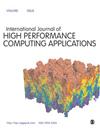GenSLMs:基因组尺度语言模型揭示了SARS-CoV-2的进化动态
IF 2.5
3区 计算机科学
Q2 COMPUTER SCIENCE, HARDWARE & ARCHITECTURE
International Journal of High Performance Computing Applications
Pub Date : 2023-10-27
DOI:10.1177/10943420231201154
引用次数: 0
摘要
我们寻求改变如何识别和分类引起大流行的新病毒和新出现的病毒变体,特别是SARS-CoV-2。通过适应基因组数据的大语言模型(large language models, LLMs),我们构建了能够了解SARS-CoV-2基因组进化格局的基因组尺度语言模型(genome-scale language models, GenSLMs)。通过对超过1.1亿个原核基因序列进行预训练,并对150万个基因组上的sars - cov -2特异性模型进行微调,我们发现GenSLMs可以准确快速地识别相关变异。因此,据我们所知,GenSLMs代表了第一个全基因组规模的基础模型之一,可以推广到其他预测任务。我们演示了genslm在基于gpu的超级计算机和ai硬件加速器上的扩展,在训练运行中使用1.63 zttaflops,混合精度持续性能为121 PFLOPS,峰值为850 PFLOPS。我们通过研究genslm来跟踪SARS-CoV-2的进化动力学,提出了初步的科学见解,为在大型生物数据上实现这一目标铺平了道路。本文章由计算机程序翻译,如有差异,请以英文原文为准。
GenSLMs: Genome-scale language models reveal SARS-CoV-2 evolutionary dynamics
We seek to transform how new and emergent variants of pandemic-causing viruses, specifically SARS-CoV-2, are identified and classified. By adapting large language models (LLMs) for genomic data, we build genome-scale language models (GenSLMs) which can learn the evolutionary landscape of SARS-CoV-2 genomes. By pre-training on over 110 million prokaryotic gene sequences and fine-tuning a SARS-CoV-2-specific model on 1.5 million genomes, we show that GenSLMs can accurately and rapidly identify variants of concern. Thus, to our knowledge, GenSLMs represents one of the first whole-genome scale foundation models which can generalize to other prediction tasks. We demonstrate scaling of GenSLMs on GPU-based supercomputers and AI-hardware accelerators utilizing 1.63 Zettaflops in training runs with a sustained performance of 121 PFLOPS in mixed precision and peak of 850 PFLOPS. We present initial scientific insights from examining GenSLMs in tracking evolutionary dynamics of SARS-CoV-2, paving the path to realizing this on large biological data.
求助全文
通过发布文献求助,成功后即可免费获取论文全文。
去求助
来源期刊
CiteScore
6.10
自引率
6.50%
发文量
32
审稿时长
>12 weeks
期刊介绍:
With ever increasing pressure for health services in all countries to meet rising demands, improve their quality and efficiency, and to be more accountable; the need for rigorous research and policy analysis has never been greater. The Journal of Health Services Research & Policy presents the latest scientific research, insightful overviews and reflections on underlying issues, and innovative, thought provoking contributions from leading academics and policy-makers. It provides ideas and hope for solving dilemmas that confront all countries.

 求助内容:
求助内容: 应助结果提醒方式:
应助结果提醒方式:


